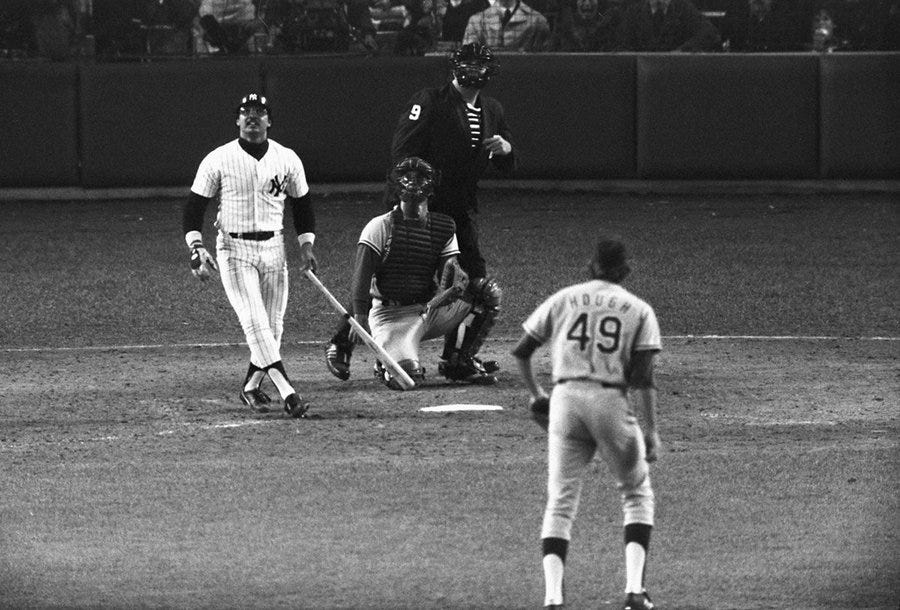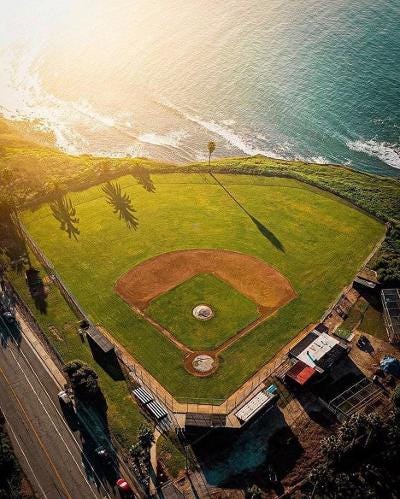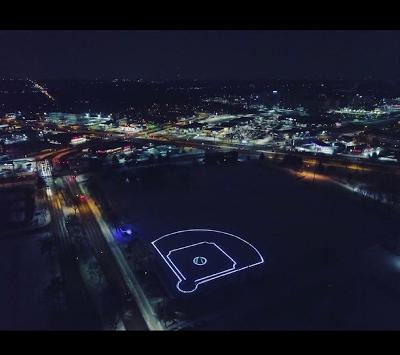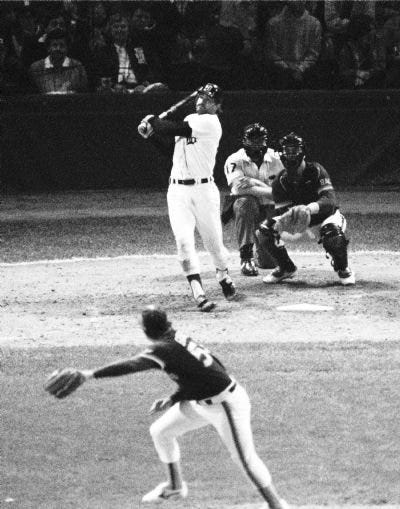What Happened at the Winter Meetings, What Didn’t and What it Means for Los Angeles
Clubs continue to spend wildly for past performance.
In case you missed it, it being news from the MLB Winter Meetings, and on the eve of, you missed a lot. A lot. And the clubs spent a lot of moolah. A. Lot.
The last I checked, free spenders in Texas, Philadelphia and in two boroughs of New York led a sport-wide shopping spree with a combined price tag in the neighborhood of $2 billion. Which is some neighborhood. In general although not entirely, the money spent — and I use the word “spent” instead of “invested” intentionally — went to players based on what they have done rather than what they can reasonably be expected to do. Which has been the case since Dave McNally, Andy Messersmith and the dawn of free agency in 1976. And they never learn.
The wild winter spending began with the Rangers’ signing of Jacob deGrom to a five-year, $185 million contract Saturday. While deGrom has been a legendary Mets ace, the operative phrase there is “has been.” With arm injuries limiting the right-hander to 38 starts and 224 1/3 innings pitched during his age 32, 33 and 34 seasons combined, the obvious question is, what are the odds of his getting healthier for his age 35, 36, 37, 38 and 39 seasons? I don’t know, but it can’t possibly be good, and I put the over/under on his Texas innings at 500, and consider even that to be a stretch. The slightly less obvious question looms: is deGrom Texas toast?
Moving on and undoubtedly giddy, New York responded by signing reigning American League Cy Young Award winner Justin Verlander to a smarter-though-extravagant two-year, $86.6 million deal, with an option for a third season. Please note that even while appearing in only one game plus one full season post-Tommy John surgery in 2020 and 2021, Verlander came within nine starts and 45 innings of deGrom’s three-season workload.
Other notable free agent starting-pitcher pacts inked at the Winter Meetings include Jameson Taillon (Cubs, four years, $68 million), Taijuan Walker (Phillies, four years, $72 million), former Dodger Andrew Heaney (Rangers, two years, $25 mil with incentives) and Jose Quintana (Mets, two years, $26 mil), with Zach Eflin (Rays, three years, $40 mil) and former Dodger Tyler Anderson (Angels, three years, $39 mil) agreeing to terms last week.
Speaking of former Dodgers, Trea Turner spurned a $342 million offer from San Diego to sign an 11-year, $300 million deal with the Phils, Kenley Jansen went to Boston for two years and $32 mil and Chris Martin signed a two-year, $17.5 million contract with Tampa Bay. And alas, Cody Bellinger will patrol center field at Wrigley Field next year (one year, $17.5 mil).
Position-player signings include catcher Japanese import Masataka Yoshida (Red Sox, five years, $90 million), Willson Contreras (Cardinals, five years, $87.5 million), outfielder Mitch Haniger (Giants, three years, $41.5 million), first baseman Josh Bell (Guardians, two years, $33 mil), and of course, the big deal of the day, the Winter Meetings and the winter, Aaron Judge returned to the Yankees for nine years and $360 million (with the Padres reportedly offering $400 mil, although they deny the reports, plural).
Transactions involving the Boys in Blue?
Twenty-five-year-old minor league reliever Gus Varland was taken by Milwaukee in the Rule 5 Draft. End of list.
But despite the apocalyptic-like panic on social media, despite the borderline-insane rumors about Gavin Lux moving to shortstop full-time and the equally-silly notion notion about the Dodgers resetting their luxury tax bill with a sub-$233 million payroll 2023 payroll, it’s really not as bad as all that. And I remain unfazed.
In fact, if there is an executive in the game today who will allow such nonsense to fester because it serves his purposes, while at the same time saying absolutely nothing of significance about his actual plans in his media appearances, it’s L.A.’s big-boss, Andrew Friedman. If there are two executives who qualify on both scores, it’s Friedman and bigger-boss Stan Kasten. Though the two men are not revealing their spending plan publicly — and as caretakers of a major private corporation there is no reason why they should — they have a plan and know how to use it.

Let’s get into the luxury tax/payroll numbers for a moment. It’s a bit confusing because you’ll find differing estimates and terminology depending upon where you look. For example, Baseball-Reference pegs Los Angeles with a 2023 “Total Payroll w/Options (Guaranteed + Options + Arb + Other)” of $129.8 million. Sportrac’s figures are $152,000,000 for “Active Total Payroll” and $202,192,650 for “Projected Total Payroll.” FanGraphs shows an “Estimated Luxury Tax Payroll” of $188,801,491. For the sake of argument, let’s go with FanGraphs, because it’s the one most cited, and round up to $189 million, which translates to the Dodgers as of this evening sitting $44 million below the first luxury tax threshold of $233 million, $64 million below the second threshold of $253 million and $84 million below the third of $273 million.
Rather than bore you with the precise surcharge language for Los Angeles as a repeat offender, let’s stipulate that incentive to reset the tax bill with a payroll below the $233 million mark exists. But with only $90 million committed to 27 players next year, and only $73.5 million committed to 22 players the year after that, when the first threshold increases to $237 million and $241 million, respectively, either 2024 or 2025 is the time to reset, if there is to be a reset at all. I might add that the monkey wrench of a possible reduction of Trevor Bauer’s suspension for domestic abuse would be a factor in 2023, but not in 2024 or 2025. And management is simply not going to punt a season because of that monumental asshole.
Importantly, you don’t need a $300 million payroll to win a World Series. The Astros spent about $200 million in 2022, the Braves came in around $175 million in 2021 and L.A. at $237 mil in 2020, to name the most recent three champions. If I had to guess (and I don’t), I’d predict a 2023 L.A. payroll close to or above the second threshold of $253 million. And maybe as high as $265 mil.
Available free agent shortstops not named Cheating-Astro Carlos Correa include Xander Bogaerts and Dansby Swanson. If Friedman reels in one of those two, we’re talking $20 mil or $25 mil per year. If he signs Jose Iglesias as a one-year stopgap pact — and he’d have my endorsement if he does — or trades for for Willy Adames, that’s at most $10 mil. Free agent SPs Carlos Rodon and Chris Bassitt are both still out there, perhaps because they have qualifying offers attached to their names, which could result in a five-year $125 million deal for the former and a three-year $60 million contract for the latter. I’ve mentioned Koudai Senga, Ross Stripling and Corey Kluber as potential rotation fits before and am happy to do so again here. Update: Bogaerts signed an 11-year, $280 million contract with San Diego Wednesday night.
Until all of the above players are off the board it’s entirely possible for a man in each category to call Los Angeles home by Christmas. And if not by December 25, then by Valentine’s Day. Because it doesn’t matter when you get the players you covet as long as you get them. The December 7 date which coincides with the close of the Winter Meetings business is an artificial deadline. Friedman and company are fine watching their competitors spend like stoned sailors for the moment. When they’re ready to act, and when the deals suit them, they’ll pounce.
And I still think, if he’s willing to be reasonable, Justin Turner will be a Dodger for another go-round. So everybody just chill.
Tweet of the Week:
ICYMI:
Friedman took a flyer on reliever Shelby Miller, signing him to a one-year, $1.5 million major league contract Friday. The now 32-year-old right-hander, famous for being traded from Arizona to Atlanta for Swanson seven years ago, sports a 7.02 ERA since 2015, but struck out 14 batters in seven innings for San Francisco last season and has pitched well in the minors for the last two seasons. I’ve learned not to question this particular baseball exec when it comes to these kinds of reclamation projects. At $1.5 mil, it’s like chicken soup to a dead man: it couldn’t hurt.
Fred McGriff was elected to the Hall of Fame by the Contemporary Baseball Players Committee Sunday. Barry Bonds and Roger Clemens were not. Neither was Don Mattingly, who for some reason has taken a job as John Schneider’s bench coach in Toronto.
Media Savvy:
The first of two from Keith Law, chosen especially for the headline, “Astros deny the existence of time by signing José Abreu” at the Athletic. “Rangers strike gold with Jacob deGrom. Is it the fool’s variety?” is worth a read as well.
Also of interest at the Athletic is “How MLB’s new rules are shaping the 2022-23 offseason and changing the art of team building,” by Jayson Stark.
Here is a story about Olivia Pichardo, the first woman to make a Division 1 baseball team, by Matt Monagan at MLB.com.
Similarly, here is “Before Jackie Robinson, Jorge Pasquel broke baseball’s color barrier — in Mexico,” by Kevin Baxter at the Los Angeles Times.
And Ed Eagle has a story about Roberto Clemente’s 1972 run for 3000 hits also at MLB.com.
Baseball Photos of the Week:
Reggie Jackson homering in the 1977 World Series. I know, too soon!
Fromhold Field in San Pedro.
Hank Aaron homering in the 1957 World Series.
Memorial Park, home of the Royal Oak Leprechauns of the Great Lakes Summer Collegiate Baseball League, in Royal Oak, Michigan.
Mickey Lolich at his donut shop in Detroit.
Kirk Gibson homering in the 1984 World Series.
Max Muncy homering in the 2018 World Series.
And remember, glove conquers all.
Howard Cole has been writing about baseball on the Internet since Y2K. Follow him on Twitter. Follow OBHC on Twitter here. Be friends with Howard on Facebook.
Read OBHC online here.














The number$ are utterly in$ane. When i was a kid, pre-LA Dodgers, watching the LA Angels of the PCL, including my first sports hero Steve Bilko, I had no idea they even got paid! No, they didnt get paid much, but it really wasnt until Koufax and Drysdale got a hundred grand a year that i realized it wasnt "just a game."